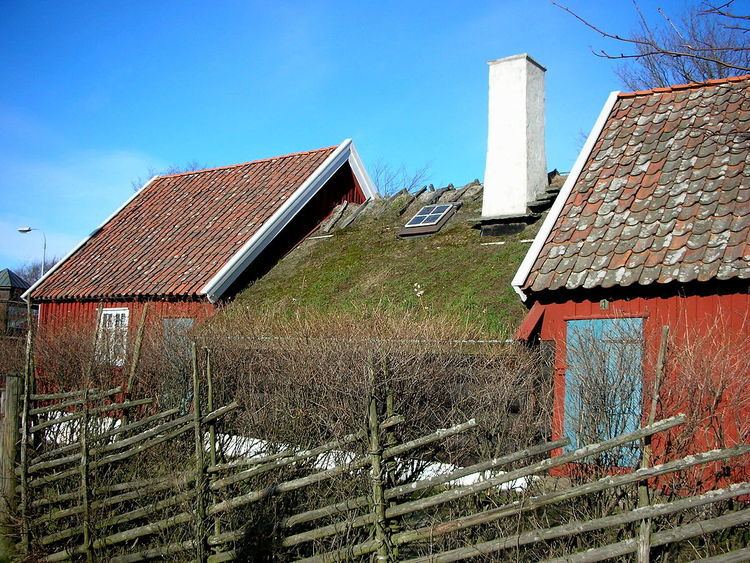Phone +46 340 828 30 | ||
 | ||
Similar Halland Museum of Cultural, Svartekällan, The Fishing Museum i, Galtabäcks hamn, Varberg Church | ||
The Bexell Cottage (Swedish: Bexellska stugan) is a small cottage in Varberg, Sweden. It has been turned into a historical heritage mini-museum.
The Bexell Cottage was originally built in 1785 in Harplinge. In 1876, it was bought by politician, member of parliament and land owner Alfred Bexell, from its owner Jöns Jönsson (born 1828) together with all interior possessions. Jönsson was only allowed to retain his day dress, according to the purchase agreement. Even Jönsson's snuffbox passed to the ownership of Bexell. Alfred Bexell was the first in Sweden who bought and protected a Swedish peasant's home with the intent of turning it into a museum. He inspired Arthur Hazelius to establish the open-air museum Skansen in Stockholm.
In 1906, the cottage was moved to Varberg. In the 20th century, it was called bålastugan, a Hallandic name of the type of cottage. In 2003, it became a part of Varberg County Museum. At present it is named Bexell Cottage.
In Bexell Cottage there are furnitures and painted wall tapestry from the 19th century. The tapestry cover the walls and ceiling of the cottage. Originally, they were only used for Christmas, but today they are posted all the year around.
Bexell Cottage can be visited by the public at the shows of the cottage that are arranged by Varberg County Museum.
Bexell's Stones
Alfred Bexell also created a different kind of "museum" in a forested area which he owned, east of Varberg (northeast of the smaller village of Rolfstorp.) The area has become famous, after visitors in 1925 began discovering rocks engraved with sayings, names of noted people of the time, or mottos. They were all commissioned by Bexell during the end of the nineteenth century, and were carved by two stonemasons whom he hired for the purpose. His diaries describe his causing the engravings but do not explain his motive.
In 2014 an effort was mounted to discover the extent of the engravings; as of 2016 some 600 names of famous writers, philosophers, scientists, politicians and statesmen have been identified in the carvings, as well as more than 180 aphorisms, sayings, quotes from literature, and Bexell’s thoughts. The messages include: "Do not say all you know but always know what you say"; and "What is sleep but the image of death."
Bexell's own tombstone is inscribed with: "Man’s history is his character."
